
RE BUILD
40th anniversary
RE IND

Where did our Journey lead us in the 2022-2023 school year? What were the major milestones along the way, the triumphs and celebrations, as well as the pitfalls and challenges? What happened at AISJ, and how did you learn and grow? What path did you follow, and how did you find your way?
A journey is a metaphor for the life of our school, and it is also the literal name of our new Strategic Direction that we launched at the beginning of the 2022-2023 school year. The AISJ Journey is a compass that shows us where we need to go, provides direction and clarity, and helps us move forward with unity. The AISJ Journey articulates the priorities of our organization and describes our process for getting there. At AISJ, as students, staff and parents, we walk together on this journey. There are times of celebration and harmony, viewing serene vistas and enjoying beautiful moments. There are also stormy days and rocky roads, and we have to support each other through hard times along the path. In all of these situations we strive to “see” each other, embracing the philosophy of Ubuntu, and we try to live out our Community Principles.

Our theme for the school year was “Rewind and Rebuild” as we commemorated the 40th anniversary of AISJ. We found ways to honor the journeys of those who walked before us at AISJ, and we moved full speed ahead in the wake of the pandemic. One of the notable aspects of our year was the absence of COVID; we gathered and celebrated unfettered by the acute anxiety of imminent disease, and we began to rebuild some of the programs and special traditions that make AISJ an exceptional place. We are fortunate to be a part of a wonderful school that is strong, resilient and committed to inspiring learning and building our better world.
At an international school where mobility is ever present, there are special people who walk with us for a while and then they need to go on to other adventures. We keep going and we are grateful they were with us for a while as they play an integral role in helping us improve and move farther down our path. Each person brings unique talents as they join in our purpose and help us shape our way. We depend on each other, we are better when we act together, and we share a common bond as we continuously join in community.
22-23 theme.
VISION PURPOSE
COMMUNITY PRINCIPLES
LEARNING PRINCIPLES
Inspire learning to build our better world.
The purpose of AISJ is to provide exceptional educational experiences in a diverse and nurturing environment. We cultivate an inclusive community of learners and empower global citizens to fulfill their future purpose.
Learning is the development of knowledge, skills and character through experience and reflection that changes who we are.
Learning happens best when...
RELATIONSHIP: Learners engage in positive relationships that enhance their sense of safety, well-being, and belonging.
CHALLENGE: Learners are challenged with ambitious expectations and appropriate, personalized goals.
PROCESS: Learners engage in processes of inquiry, investigation, deep thinking, feedback, and reflection to apply and transfer ideas in multiple contexts.
OWNERSHIP: Learners own their learning and know-how to learn, empowering them to be self-directed, creative and explore their curiosities and individual passions.
ENGAGEMENT: Learners are active and collaborative, engaging with diverse viewpoints to develop empathy and character.
RELEVANCE: Learners find purpose and meaning as they make authentic connections among concepts and across disciplines.
CONTENTS CONTENTS CONTENTS

8.
16.
YEAR IN REVIEW.
Message from the Board Chair
Message from the School Director
Message from the Treasurer
FINANCIAL STATEMENT.
Statement of Comprehensive Income Statement of Financial Position
22. STRATEGIC PLAN.
Progress Monitoring Summary Culture, Care, Community Informed, Purposeful Learning Integrated Sustainable Systems
ONTENTS ONTENTS

Strategic Plan Development & Background
48. STRATEGIC PLAN DIRECTION.
AISJ Compass
Strategic Priorities
56.
64.
SOCIAL ETHICS REPORT. INTERESTING FACTS.
8.
2022-2023 YEAR IN REVIEW
1. Message from the Board Chair
2. Message from the School Director
3. Message from the Treasurer
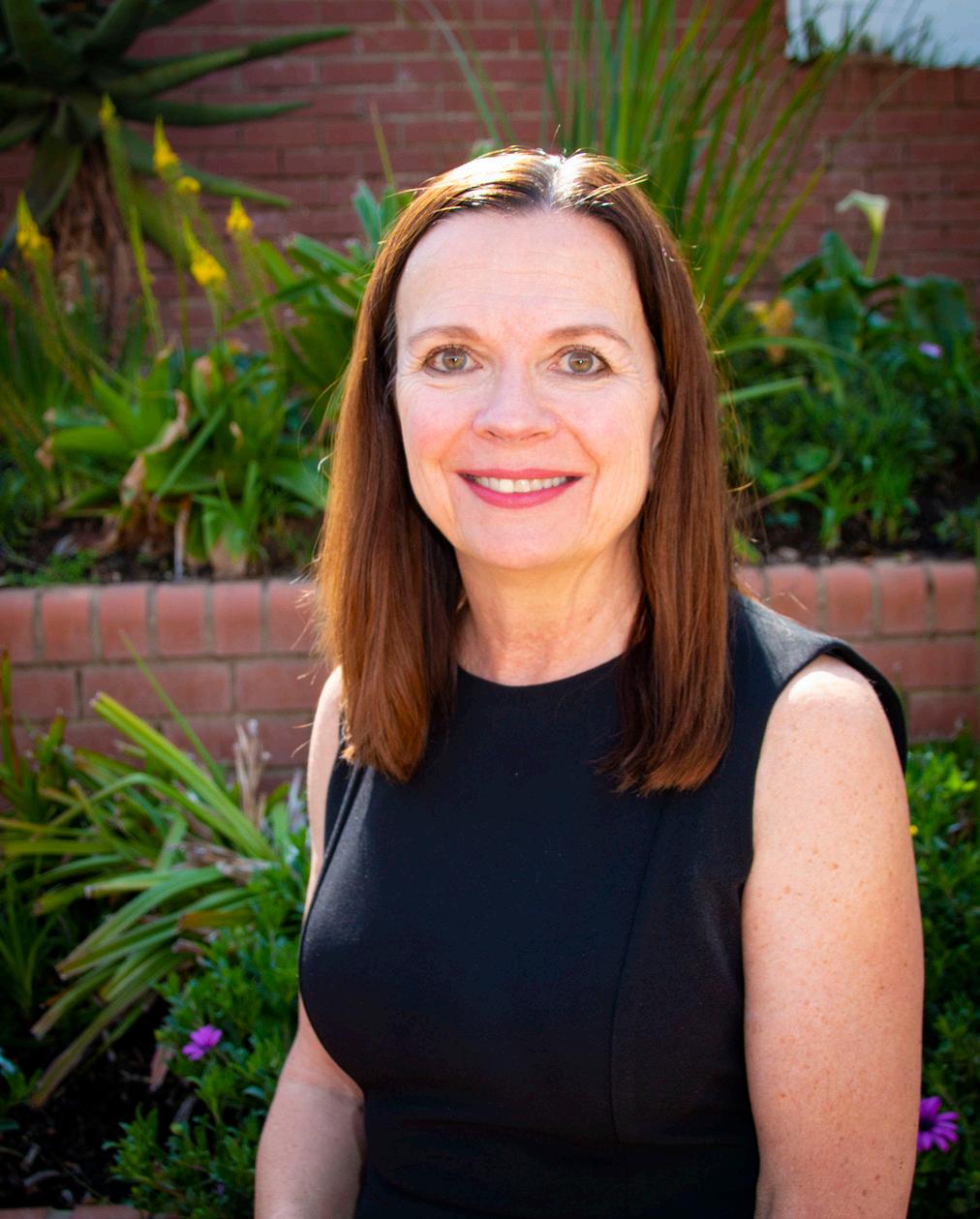


On behalf of the AISJ Board of Directors, I am pleased to present the 2022-23 Annual Report. We sincerely apologize for the delayed publication of the report caused by a late receipt of the external Financial Audit.
2022-23 marked the emergence from the Covid-19 pandemic. We were excited to welcome parents back onto the campuses and to once again host in-person events celebrating our four pillars of academics, arts, athletics, and service. Congratulations to our Class of 2023, who demonstrated remarkable resilience while over half of their high school experience occurred under pandemic restrictions! We wish you every success in your next endeavor.
The Board would also like to acknowledge the resilience of our faculty, staff, and leadership as we started the school year with many of our faculty out of the country awaiting approval of
their South African work visas. You once again demonstrated the strength of our AISJ community.
2022-23 saw the successful launch of our new Strategic Plan focused on the three strategic priorities: Culture, Care, and Community; Informed Purposeful Learning; and Integrated Sustainable Systems. Much of the Board’s work in 2022-23 was focused on sustainability.
Highlights include
• framework for long-term financial planning
• support of expanded inclusion services pathways for students with greater learning needs
• commitment to moving to a faculty single salary scale to be implemented in a financially sustainable way
• hiring of a new School Director
The Board also focused on increasing community engagement and held parent open houses on both

campuses along with faculty and staff sessions.
Although much attention was focused on the new Strategic Plan, the Board is proud to acknowledge the continued efforts of leadership, faculty, staff, and students in the areas of JEDI. Launched just a few short years ago, JEDI has now become embedded at all levels of the AISJ organization.
With 2023-24 being Dr. Moore’s final year with AISJ, the Board undertook an extensive, intense, and collaborative search for Dr. Moore’s replacement. The process culminated in May with the appointment of Michael Schooler, who will start in July 2024 under a 3-year contract.
It was my privilege to serve as Board Chair for 202223, and I want to thank all the Board and Committee members who volunteered their time and expertise to the governance of AISJ.
Carolynn Pettit Board Chair
11.

S CHOOL DIRECTOR S CHOOL DIRECTOR CHOOL
It is with great pleasure and pride that we present the American International School of Johannesburg annual report for the academic year 2022-2023. As the School Director, I am honored to reflect on the achievements, progress, and challenges that have shaped our educational journey over the past year.
This annual report serves as a testament to our entire school community’s dedication, hard work, and collaborative efforts. ‘We are better when we act together, and we have navigated through unprecedented times, overcoming obstacles and embracing opportunities for growth and innovation.
This report will give you an overview of our school’s progress during the 2022-2023 school year. From academic excellence to artistic achievements, from athletic triumphs to community outreach initiatives, the school year was full of incredible experiences for our students and staff. It is essential to celebrate the diverse talents and accomplishments that define our school; these accomplishments are highlighted every week in our Izindaba newsletter, and we report on surveys and benchmarks in this report.
CHOOL CHOOL


As we reflect on the past year and celebrate our achievements, we also acknowledge the lessons learned and the areas where we strive to improve. Our commitment to continuous improvement drives us to set new goals, implement new strategies, and enhance the overall educational experience for every student.
One of the critical elements that framed 2022-2023 was the first year of implementation of our new strategic direction, The AISJ Journey. The strategic priorities of Culture, Care and Community, Informed Purposeful Learning, and Integrated Sustainable Systems became the central areas of focus and the basis for action planning. Our Principles and common language began to spread throughout the organization, and the culture at AISJ continued to shift.
The school year was marked by some profound challenges as well. The Department of Home Affairs in South Africa did not process the visas for most new faculty, and we began the year with many teachers stuck abroad as they could not enter the country to teach on our campuses. With hybrid online structures reemerging from the days of COVID, there were notable challenges for educators as we began the school year. An interim Principal in the Elementary School also had visa-related issues; for most of
CHOOL DIRECTOR CHOOL DIRECTOR 13.


the school year, there was no Elementary Principal in place. As always, the resilience of AISJ shines through; we adapted to difficult circumstances, the teachers were able to enter the country, and the visa saga is a nightmare of the past. Unfortunately, the visa issue has continued to impede some families attempting to enter South Africa, and student enrollment continues to be a victim of this geopolitical issue.
Despite the challenges, AISJ continued to provide exceptional educational experiences for our students. I extend my heartfelt gratitude to our dedicated faculty and staff for their unwavering commitment to student success, our supportive parents for their partnership and involvement, and most importantly, our students for their hard work, resilience, and enthusiasm for learning.
Ubuntu,
Dr Jeremy Moore School Director
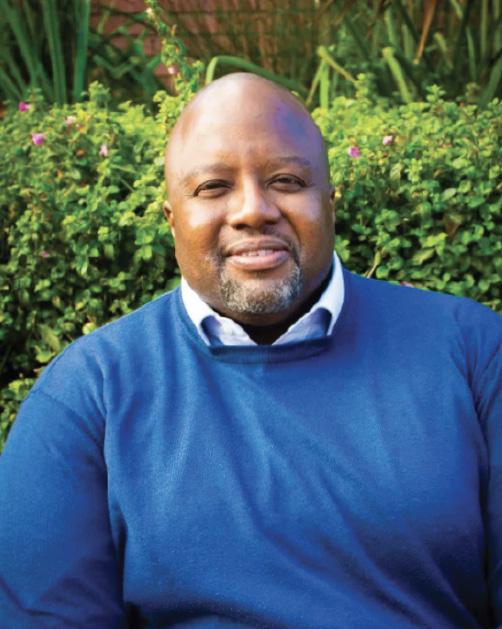
Dear AISJ Community,
REASURER REASURER T TREASURER REASURER T REASURER

I write this message for the 2022-2023 AISJ academic year during which I had the privilege of being the appointed Treasurer.

This academic year has been impacted by the prolonged economic recovery from COVID and South Africa continues to be impacted by geopolitical instability caused by the Russia/Ukraine war. The school continues to implement strong risk and financial management processes to ensure we remain in a strong financial position.
AISJ is not immune to the current realities of the global economy and the shrinking South African economy. We continue to observe declining student enrollment. We have also benefited from foreign exchange movements, which are out of AISJ’s control, but continue to work in favor of the school.
• Optimization of capital expenditure and deferral of capital projects that could be postponed into future years
• Investing excess cash reserves in interest bearing accounts
• Continuous analysis and evaluation of the student / faculty ratios, and streamlining of the administrative organization and analysis of fringe benefits
These initiatives, along with the foreign exchange gain, allowed AISJ to overcome a challenging operating environment, to conclude the 2022-2023 academic year with an operational surplus, and an overall cash surplus.
REASURER REASURER15.

The AISJ Board remains focused on achieving multiyear financial stability while ensuring education quality and is confident that the school is moving steadily in that direction.
I am pleased to report that AISJ has received an unqualified opinion from our independent auditors for the 2022-2023 financial year.
Abiodun Adedayo Olowoniyi AISJ Board Treasurer
16.
FINANCIAL STATEMENTS
1. Statement of Comprehensive Income
2. Statement of Financial Position
16.
Revenue Other Income Foreign Exchange Net Gain/Loss Operating Expenses Staff Cost Interest Received Finance Costs 2023 ZAR 62 962 163 Surplus from Operations Total Comprehensive Income for the Year * Foreign exchange gains and losses are now shown as net loss or gain STATEMENT OF COMPREHENSIVE INCOME FOR YEAR ENDED 30 JUNE 2023 430,165,409 434, 533, 191 7,803,004 5,273,411 * 50,173,432 27,137,752 (124,292,339) (108,990,067) * (319,906,654) (313,987,982) 43,942,852 43,966,304 14,689,217 3,831,853 (1,964,206) (2,061,950) 56,667,863 45,736,207 2022 ZAR 18.
EXPENSES Tuition Fees Transport Fees Capital Fees Staff Cost Student Activities Teaching & Learning Technology Transportation Administrative & School-wide Support Building & Grounds Maintenance & Security Depreciation Instructional Support Material 10 20 30 40 50 60 70 80 2023 2022 82.4% 5.8% 11.6% 0.2% Entrance Fees 82.2% 5.7% 11.8% 0.2% 2023 2022 72.2% 74.4% 10 20 30 40 50 60 70 80 7.0% 5.7% 5.9% 7.0% 5.3% 5.8% 2.1% 2.1% 1.7% 0.8% 1.7% 1.5% 3.2% 2.0% 1.0% 0.7%
REVENUE
STATEMENT OF FINANCIAL POSITION FOR YEAR ENDED 30 JUNE 2023 NON-CURRENT ASSETS Property, Plant & Equipment CURRENT ASSETS Inventory Trade & Other Receivables Cash & Cash Equivalents Total Current Assets RESERVES Retained Income NON-CURRENT LIABILITIES Finance Lease Liabilities Long-Term Loans Total Non-Current Liabilities CURRENT LIABILITIES Trade & Other Payables Income Received in Advance Finance Lease Liabilities Short Term Loans Total Current Liabilities Assets Reserves & Liabilities 450,906,147 Total Assets Total Reserves & Liabilities 449,078,090 475,629 439,996 18,957,189 214,597,754 276,749,361 226,047,343 675,125,433 612,461,061 10,352,137 10,352,137 7,796,140 67,607,266 747,088,326 18,451,143 18,451,143 6,944,433 44,213,229 675,125,433 11,009,593 30,553,426 29,257,700 25,017,711 12,251,085 296,182,179 2023 ZAR 2022 ZAR 669,128,923 747,088,326 20.
ASSETS RESERVES & LIABILITIES 66.5% 0.1% 1.6% 12.9% 18.9% 60.4% 0.1% 2.5% 12% 25% 2022 2023 Property, Plant, & Equipment Inventory Trade & Other Receivables Operational Reserves Bank Balances & Short-Term Deposits 90.7% 1.0% 2.7% 3.7% 1.8% 89.6% 1.0% 1.4% 4.1% 3.9% 2022 2023 SHORT TERM LOANS LONG TERM LOANS INCOME RECEIVED IN ADVANCE TRADE & OTHER PAYABLES INCOME RECEIVED IN ADVANCE TRADE & OTHER PAYABLES SHORT TERM LOANS LONG TERM LOANS RETAINED INCOME RETAINED INCOME
22.
2022-2023 STRATEGIC PLAN
1. Progress Monitoring Summary
2. Culture, Care, Community
3. Informed, Purposeful Learning
4. Integrated Sustainable Systems
22.
PROGRESS MONITORING PROGRESS MONITORING

INTRODUCTION .
Our progress and the strategic direction of AISJ are monitored by the Board, Leadership Team, and Management. An annual survey developed by Panorama provides reliable data to inform school improvement. Standardized assessment results are analyzed and discussed biannually. The Board and Leadership Team come together three times each year to celebrate and review progress, remaining ready and willing to adapt and revise strategies and action plans to be effective. AISJ identified three strategic priorities that are central focus areas for all we do.
1. CULTURE, CARE, COMMUNITY
JEDI outcomes summary (quantitative and qualitative)
Social Emotional Learning outcomes summary (quantitative and qualitative)
Wellbeing outcomes summary (quantitative and qualitative)
MONITORING SUMMARY MONITORING SUMMARY

2. INFORMED PURPOSEFUL LEARNING
Competency Based Education outcomes summary (quantitative and qualitative)
Instructional Design, Assessment & Pedagogy outcomes summary (quantitative and qualitative)
Personalized Learning & Pathways outcomes summary (quantitative and qualitative)
3. INTEGRATED SUSTAINABLE SYSTEMS
Resource Management outcomes summary (quantitative and qualitative)
Connections & Community Partnerships outcomes summary (quantitative and qualitative)
Effectiveness & Synergy outcomes summary (quantitative and qualitative)

FAVORABLE
SURVEY RESULTS
UNFAVORABLE
INDICATOR OF PROGRESS
Perceptions of the overall social and learning climate of the school.
NEUTRAL
STATUS
INDICATOR
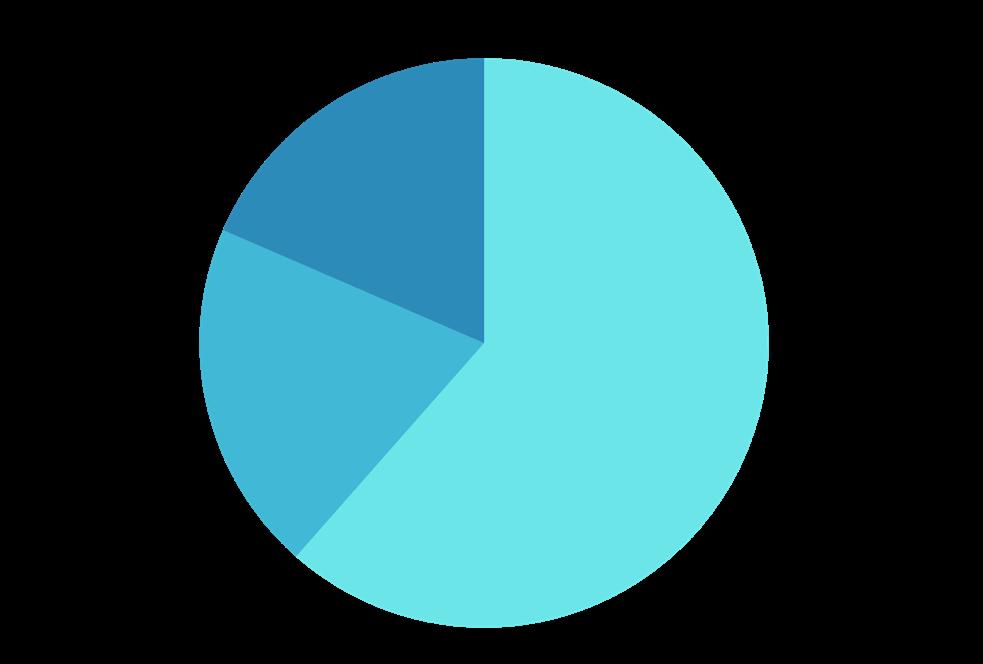
How strong the social connection is between teachers and students within and beyond the school.

How much students feel that they are valued members of the school community.

Perceptions of student physical and psychological safety while at school.

How much faculty and staff feel that they are valued members of the school community.

How well the school supports faculty and staff in learning about, discussing, and confronting issues of race, ethnicity, and culture.

How well the school supports students in learning about, discussing, and confronting issues of race, ethnicity, and culture.

Perceptions of readiness to address issues of diversity.

Perceptions of the quantity and quality of equity-focused professional learning opportunities available to faculty and staff.

INDICATOR OF PROGRESS STATUS
Perceptions of the quantity and quality of professional learning opportunities about social emotional learning available to faculty.

Perceptions of the overall social and learning climate of the school.
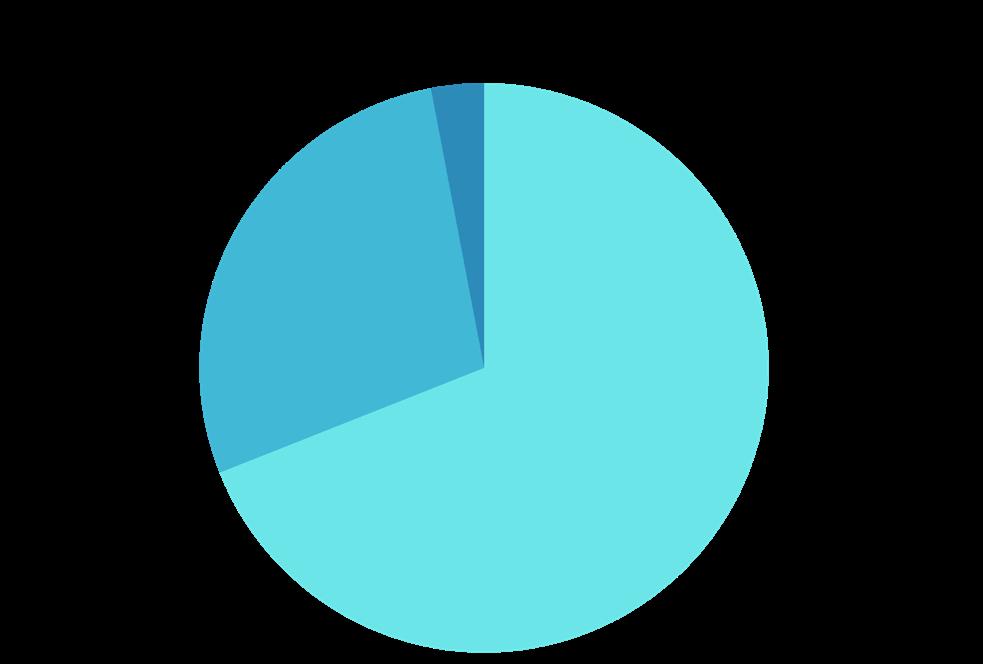
Faculty and staff perceptions of their own professional well-being.

Perceptions of faculty and staff relationships with the families at their school.

INDICATOR
FAVORABLE NEUTRAL
UNFAVORABLE
Perceptions of faculty and staff relationships with school leaders.

Perceptions of the overall social and learning climate of the school.

Perceptions of student physical and psychological safety at school.

AISJ is welcoming and friendly.
AISJ values a diverse and inclusive community with its ethos and actions.


SURVEY RESULTS

UNFAVORABLE FAVORABLE NEUTRAL
INDICATOR OF PROGRESS STATUS
How much students feel that their teachers hold them to high expectations around effort, understanding, persistence, and performance in class.
INDICATOR

How attentive and invested students are in school.

How much students feel that school is interesting, important, and useful.

How well students deliberately use strategies to manage their own learning processes.

Perceptions of whether students have the potential to change those factors that are central to their performance in school.

Perceptions of how well students are able to persevere through setbacks to achieve important long-term goals.

Perceptions of the quantity and quality of professional learning opportunities available to faculty and staff.

Perceptions of whether students have the potential to change those factors that are central to their performance in class.

Perceptions of the impact of testing on teaching and student learning.

INDICATOR OF PROGRESS
Families’ perceptions of how well the school matches their child’s developmental needs.

Families’ perceptions of the amount of academic and social support that they provide their child with outside of school.

How confident families are with regard to key parenting skills.
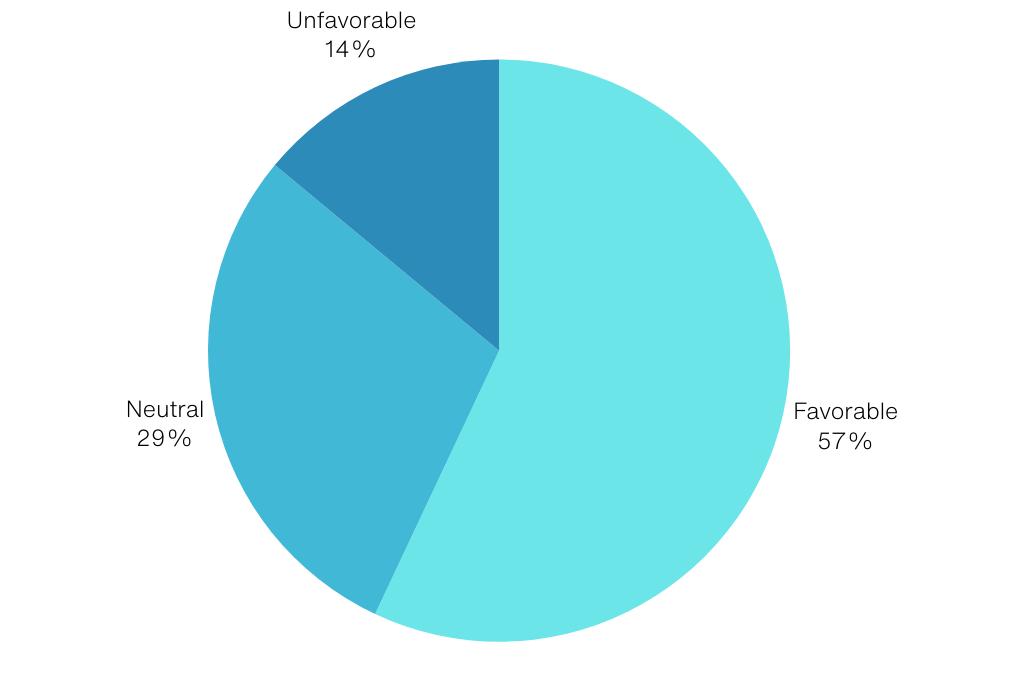
Families’ perceptions of their child’s learning-related behaviors.

INDICATOR
STATUS
FAVORABLE NEUTRAL
UNFAVORABLE
AISJ offers a balanced, well-rounded program.

The education offered to students at AISJ is of a high quality.

Teachers challenge my child to do his/her best work.
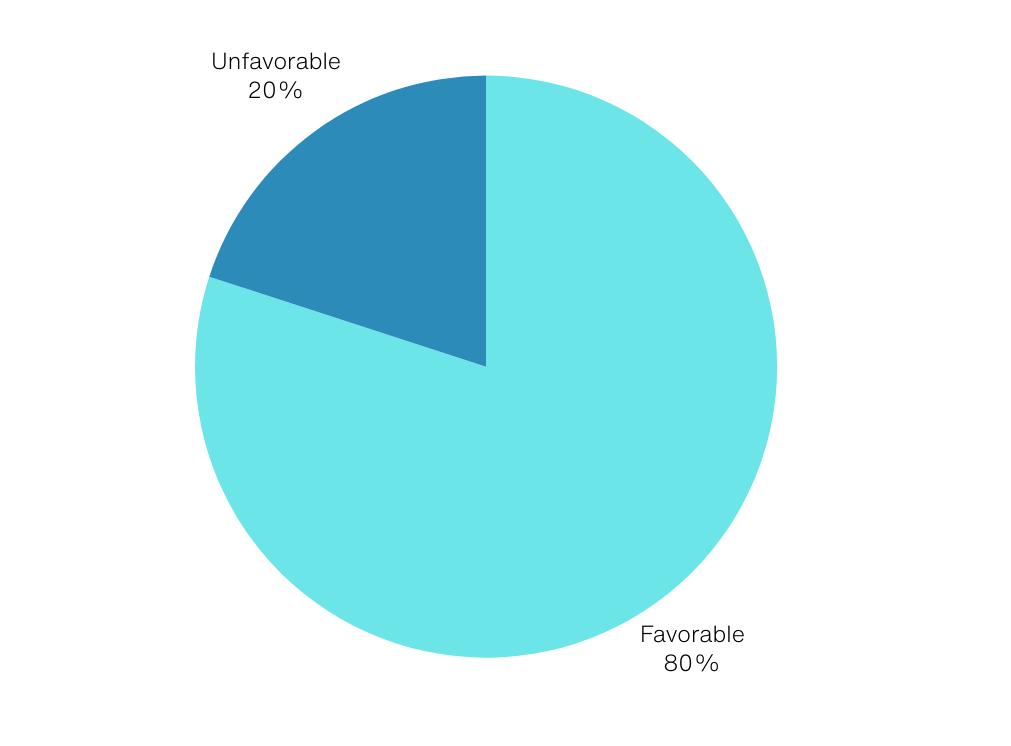
UNFAVORABLE FAVORABLE
INDICATOR OF PROGRESS STATUS
Teachers use a variety of instructional strategies to meet my child’s learning needs.
Teachers give timely and meaningful feedback to my child.
INDICATOR


My child gets to make choices about their learning.

There is consistency of teaching practice within subject areas and grade levels.

NEUTRAL
The learning expectations for my child are documented in a way that is easy to understand and helps to make the curriculum clear to me.
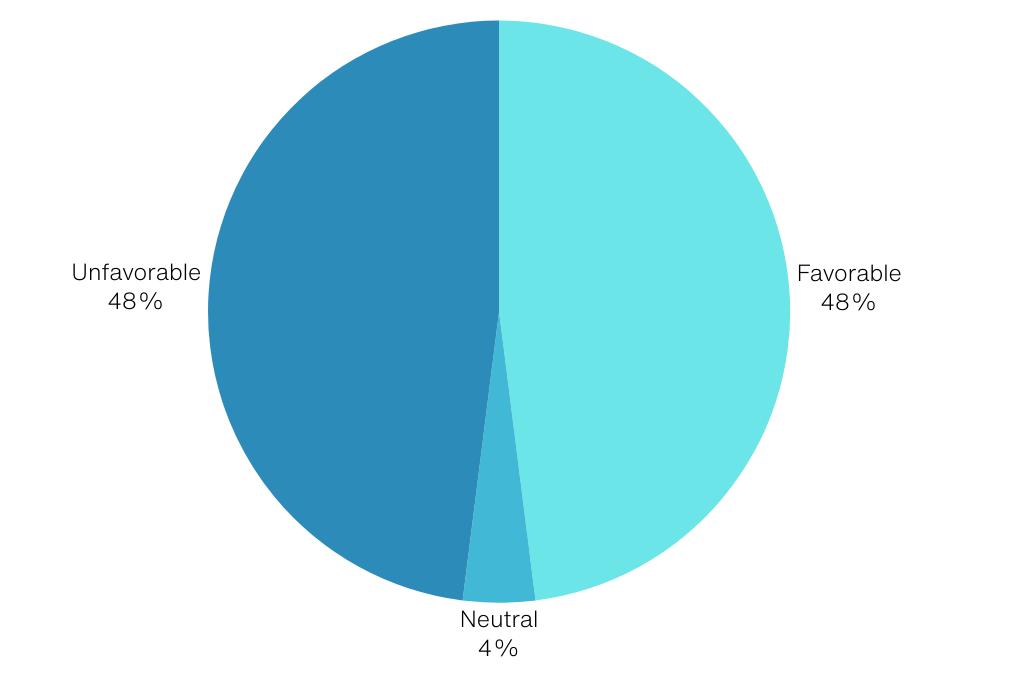
Reports of my child’s progress are clear and easy to understand.
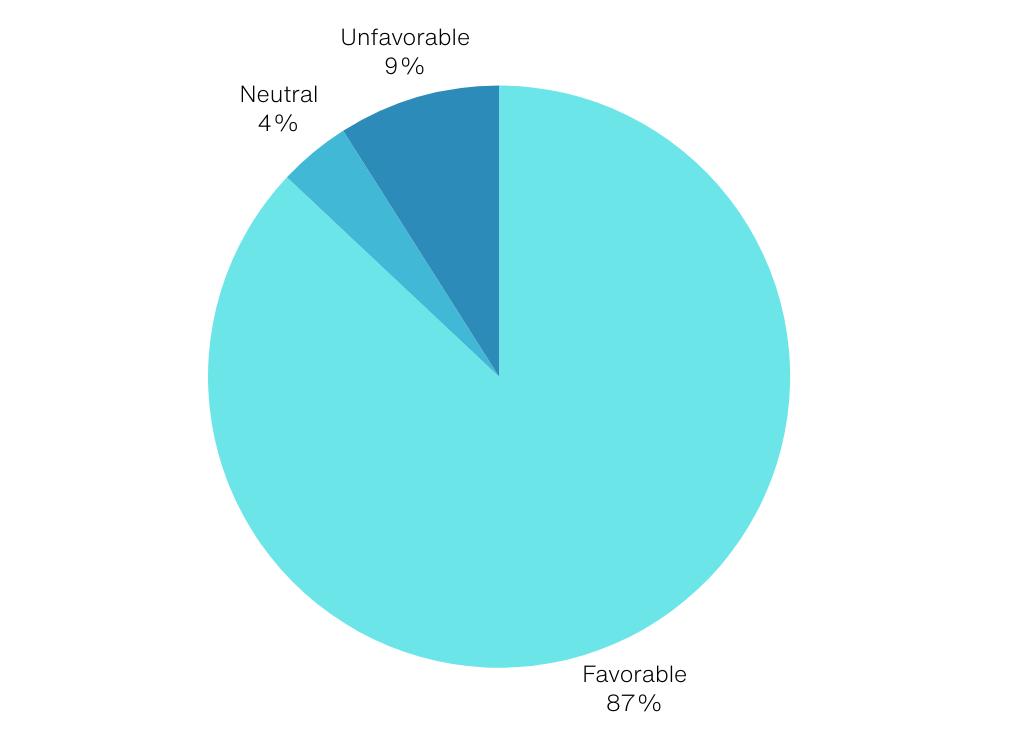
I am satisfied with my child’s academic achievement.

I am satisfied with the opportunities available in class and in other activities to help my child develop their leadership skills.
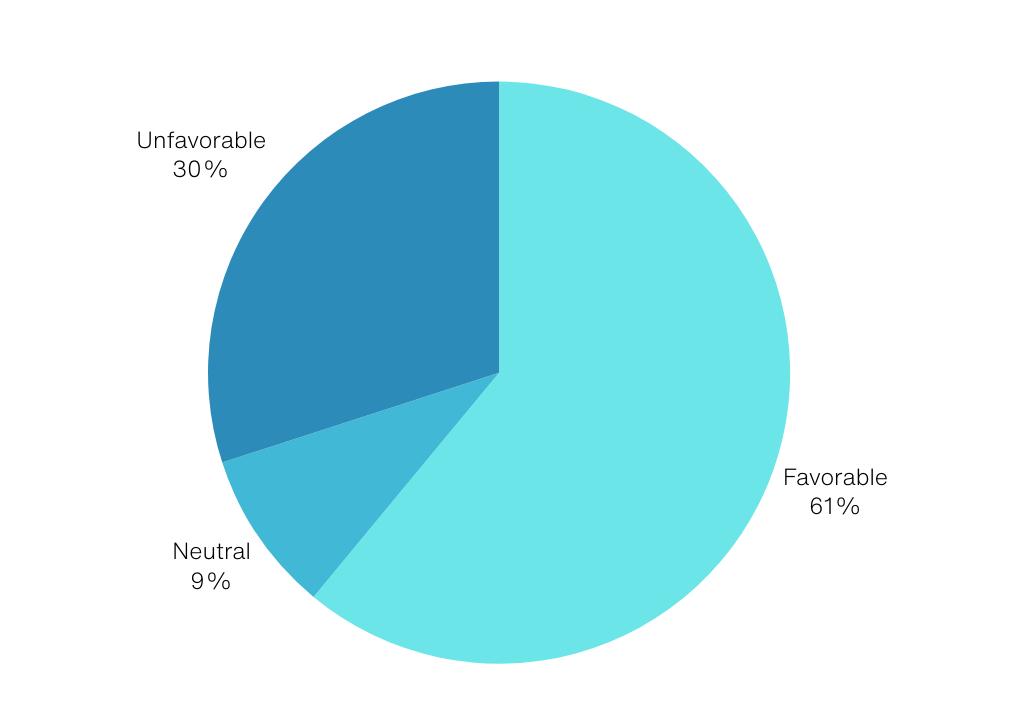
SURVEY RESULTS

UNFAVORABLE FAVORABLE
INDICATOR OF PROGRESS
Perceptions of the system that is used to evaluate faculty and staff.
NEUTRAL
STATUS
INDICATOR

Perceptions of whether teaching can improve over time.

Perceptions of the amount and quality of feedback faculty and staff receive.

Perceptions of the adequacy of the school’s resources.

Perceptions of who should be primarily responsible for school success.

Perceptions of the school leadership’s effectiveness.

Faculty perceptions of their professional strengths and areas for growth.

The degree to which families become involved with and interact with their child’s school.

Factors that can create challenges for families to interact with or become involved with their child’s school.
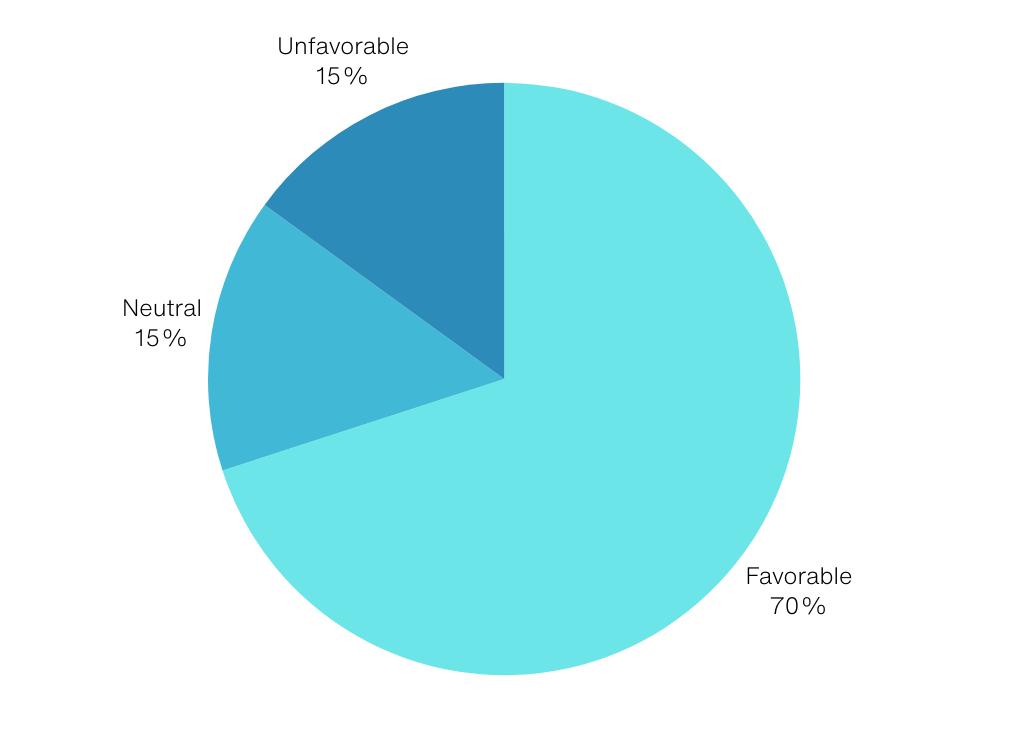
INDICATOR OF PROGRESS
I would recommend AISJ to others.
My child’s Principal shows effective leadership.
INDICATOR


Teachers are accessible and responsive to my concerns about my child.

I am satisfied with the service learning and service activities available to my child.
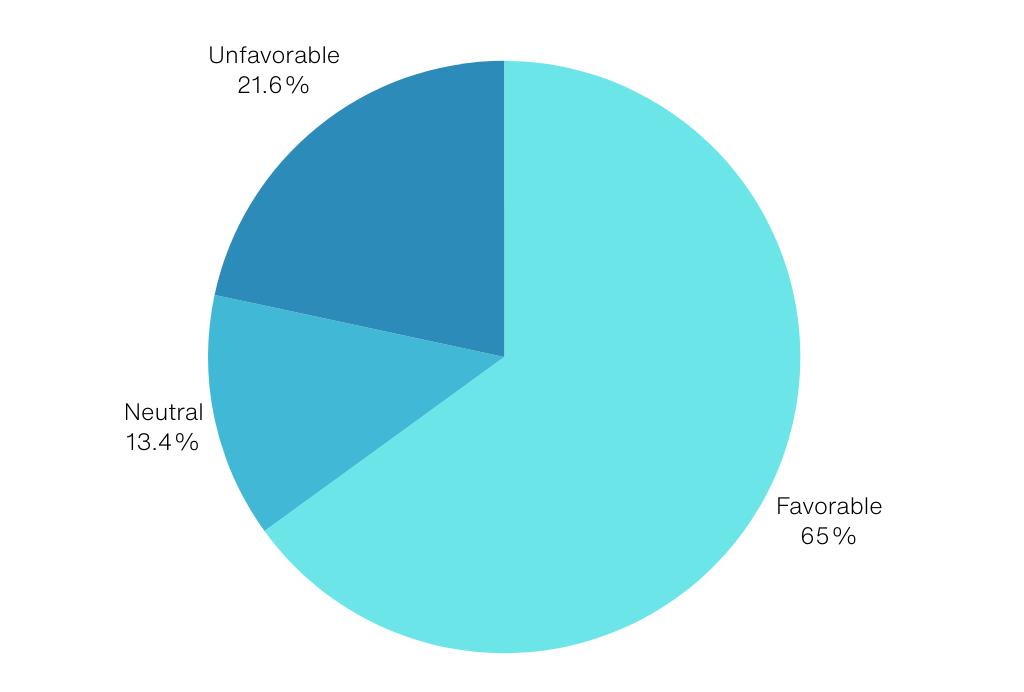
STATUS
UNFAVORABLE FAVORABLE NEUTRAL
I am satisfied with the quality of co-curricular activities at AISJ.
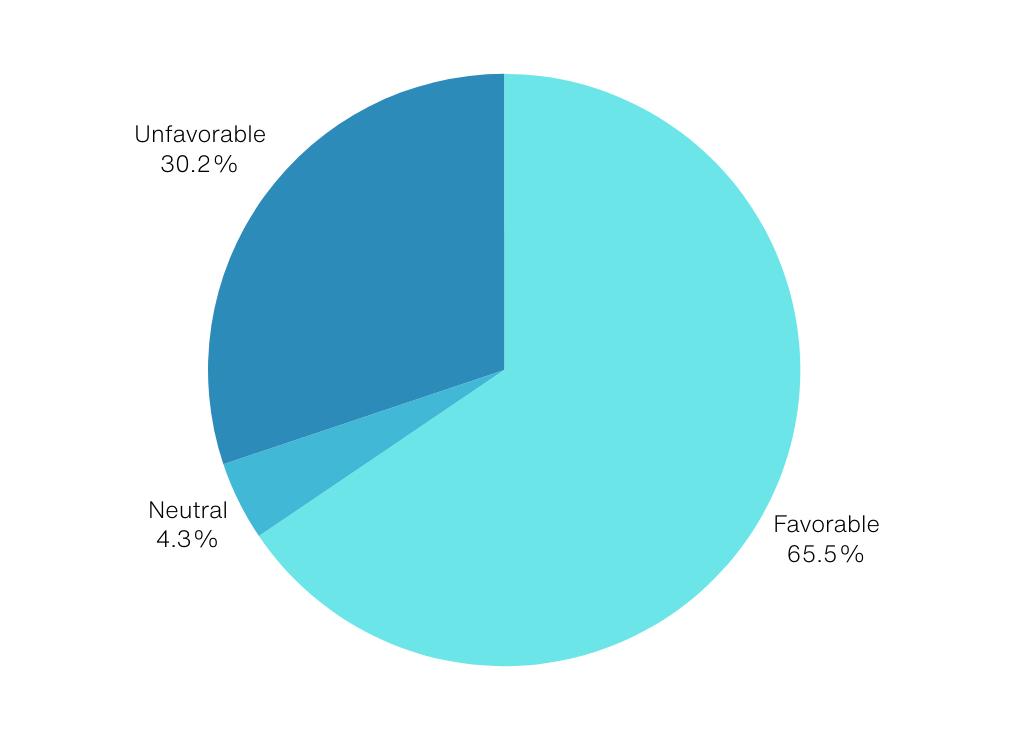
I am satisfied with the security measures in place at AISJ year.

AISJ has the facilities that I would expect at a top tier / leading international school.
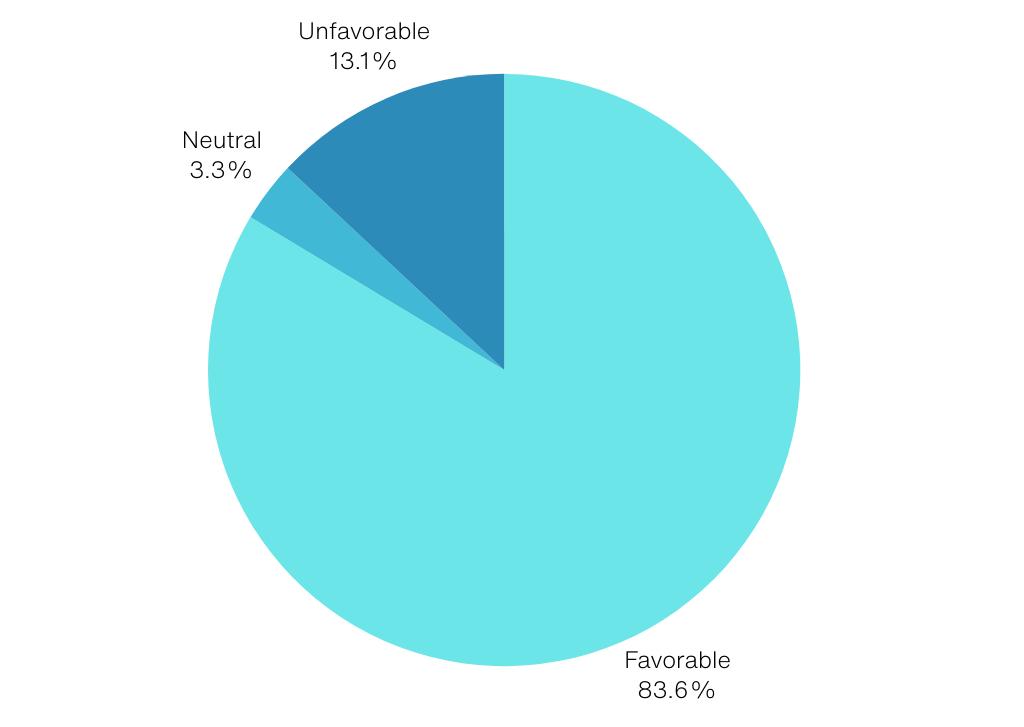
I am satisfied with school catering.
I am satisfied with AISJ transport.


I am satisfied with the services of the Business Office.
UNFAVORABLE
NEUTRAL
INDICATOR

The AISJ website is an effective tool that provides information and communication to the community.


INDICATOR OF PROGRESS STATUS FAVORABLE
Coordination of events is such that my child has the opportunity to participate in activities within Academics, Athletics, the Arts, and Service throughout the academic year.
BENCHMARK

Benchmark 5.1.A
Protocols are in place to meet the needs of students with learning differences and English language learners who have been admitted.
NOT
UNAVAILABLE OUTCOME
INDICATOR BENCHMARKS NOTES
MET MET
BENCHMARKS

NOT MET MET
BENCHMARKS
Benchmark 1.1
80% of returning students agree that they were prepared for their current grade level.
OUTCOME
UNAVAILABLE
NOTES
Gr 3-5: 89%,
Gr 6-12: 82%
Benchmark 1.2
95% of graduates who choose to apply to universities gain admission to at least one of their top three choices.
Benchmark 1.3
Written, taught, and the assessed curriculum is continually reviewed to make sure student learning is maximized.
Benchmark 1.4
85% of students, parents, and teachers agree that there is consistency of content standards within subject areas and grade levels.
85% in 2022
All faculty have been involved in process of documenting and review curriculum in Chalk.
83%
Benchmark 4.1
Year to year effect sizes of cohort results in all MAP reporting categories exceed the selected comparison groups (grades 3-8).
JHB Yes
Pretoria No
BENCHMARKS
Benchmark 4.2
MAP results for Integrated Math assessments in grades 9 and 10 indicated that 75% of our students are in the top two quintiles (above 60%) of world averages.
OUTCOME
NOTES
IM1, Grade 9: No (4/13)
IM2, Grade 9: No (23/36)
IM3, Grade 9: Yes (14/17)
IM2, Grade 10: No (3/7)
IM3, Grade 10: Yes (38/51)
TOTAL: 82/124 (66%)
Benchmark 4.3
Overall averages from students electing to take the SAT remain at or above the international averages for EBRW and Math.
Benchmark 4.4
Overall, school-wide DP results remain at or above 33.
Benchmark 4.5
All subject-specific DP scores/means remain above world averages.
Benchmark 5.1.B
Guidelines regarding the school’s capacity to meet students’ needs are documented.
BENCHMARKS
Benchmark 5.1.C
All students with identified learning needs, as documented by our guidelines, have individual learning plans.
Aug 22 Gr 12:
Reading & Writing 100%
Math: 100% achieved benchmark
Oct 22 Gr 12: Reading & Writing 100%
Math: 79%
Mar 23 Gr 11:
Reading & Writing 100%
Math: 77%
2022 average = 36
MET MET UNAVAILABLE
NOT
Benchmark 5.1.B
Student progress is annually evaluated.
Benchmark 2.2
At least 3% of annual expenses are allocated to faculty professional learning.
2.4% was allocated in 2022-23
NOT MET MET UNAVAILABLE
NOTES OUTCOME
BENCHMARKS

NOTES
Strategic Policy 7.4
AISJ maintains the following class size in any given year. The School Director may make short-term adjustments to class sizes (not to extend beyond the current academic year) if unusual circumstances exist or class balance requires adjustment and will inform the Board of any such exceptions. In some specific subjects, class size may be increased to enhance the learning environment. Maximum PK-K: 16; Maximum Grades 1 – 12: 18
Class sizes were exceeded in some areas.
Director reported to the Board at the beginning of the year
Benchmark 6.5
AISJ maintains an overall average teacher to student ratio of 1:7.1 +/- 0.5.
Benchmark 2.1
AISJ receives applications from at least 10 qualified applicants for each available position.
Benchmark 2.3
Exit survey results indicate the factors for faculty turnover.
Benchmark 2.4
80% of departing teachers have been employed at AISJ for at least 4 years.
INDICATOR BENCHMARKS
NOT
UNAVAILABLE
MET MET
OUTCOME
BENCHMARKS
Benchmark 3.2
The variety of academic courses for all age groups and abilities is demonstrated by the ratio of academic courses to students of 3:1.
NOTES OUTCOME
Benchmark 3.3
The variety of arts activities for all age groups and abilities is demonstrated by the ratio of arts activities to students of 35:1.
BENCHMARKS
Benchmark 3.4
The variety of athletic activities for all age groups and abilities is demonstrated by the ratio of athletic activities to students of 15:1.
Benchmark 3.5
100% of students show evidence of service learning each year.
Benchmark 5.3
The school ensures procedures and resources are available to adequately support the recruitment of diverse candidates throughout the organization.
Benchmark 5.2
AISJ budgets for and maintains a scholarship program for local students who would not otherwise have the opportunity to attend the school due to financial constraints.
NOT MET MET UNAVAILABLE
BENCHMARKS
Benchmark 6.1
AISJ maintains an operational reserve fund which is equivalent to 20% of the annual operational budget expenses. This is invested in USD and ZAR as per South African risk profile.
NOTES OUTCOME
Benchmark 6.2
0.25% of annual expenses (up to a cumulative reserve amount of 2 million ZAR) is committed to a Strategic Program Development Fund, devoted to new initiatives.
Benchmark 6.6
AISJ maintains a detailed Financial Procedures Handbook.
Benchmark 6.3
AISJ fully funds a facilities long-term maintenance plan.
Benchmark 6.5
AISJ maintains an overall average teacher to student ratio of 1:7.1 +/- 0.5.
Budgeting did not meet this parameter/benchmark.
NOT MET MET UNAVAILABLE
48.
STRATEGIC PLAN & DIRECTION
1. Strategic Plan Development & Background
2. AISJ Compass
3. Stragtegic Priorities
48.
S STRATEGIC TRATEGIC S
Development of a new strategic plan, the area of focus in 2021-2022. Every AISJ Board member joined with the Leadership Team and spent time together with Ewan McIntosh (from Notosh) to write a story and a vision of AISJ in the future. Each person shared their thoughts on the feel of the community and their ideas regarding education. In addition, there were multiple activities and opportunities for input from every member of our school community.

There was a seminal event, the Dream Summit, that brought together students, parents, faculty, staff, leaders and Board members and this was key in developing our strategic direction. We spent a day together, sharing thoughts and ideas that helped us to understand our new guiding statements, build community, dream of the future of education at our school, and contribute to the development of the new AISJ strategic direction.
44
PLAN TRATEGIC PLAN
TRATEGIC

There were opportunities to meet new people and engage in activities that offered a balance of wide-open sharing of our hopes for learning at AISJ, as well as more focused contributions to broad themes that moved us forward in forming our plans for the future.
Extending beyond the Principles and Values articulated in the community-wide Voices to Vision process, the Leadership Team and Board came together for three collaborative sessions as part of the process of articulating and refining our school’s future strategic priorities. The Strategic Planning Task Force, including high school students, faculty, Board and Leadership Team members, was an integral force in this process as well. In addition, all faculty came together to explore the basic essence of these priorities and provide feedback on these in a whole-school dialogue session. Ultimately, this process led to the development of three strategic priorities that will be the focus at AISJ for the future.

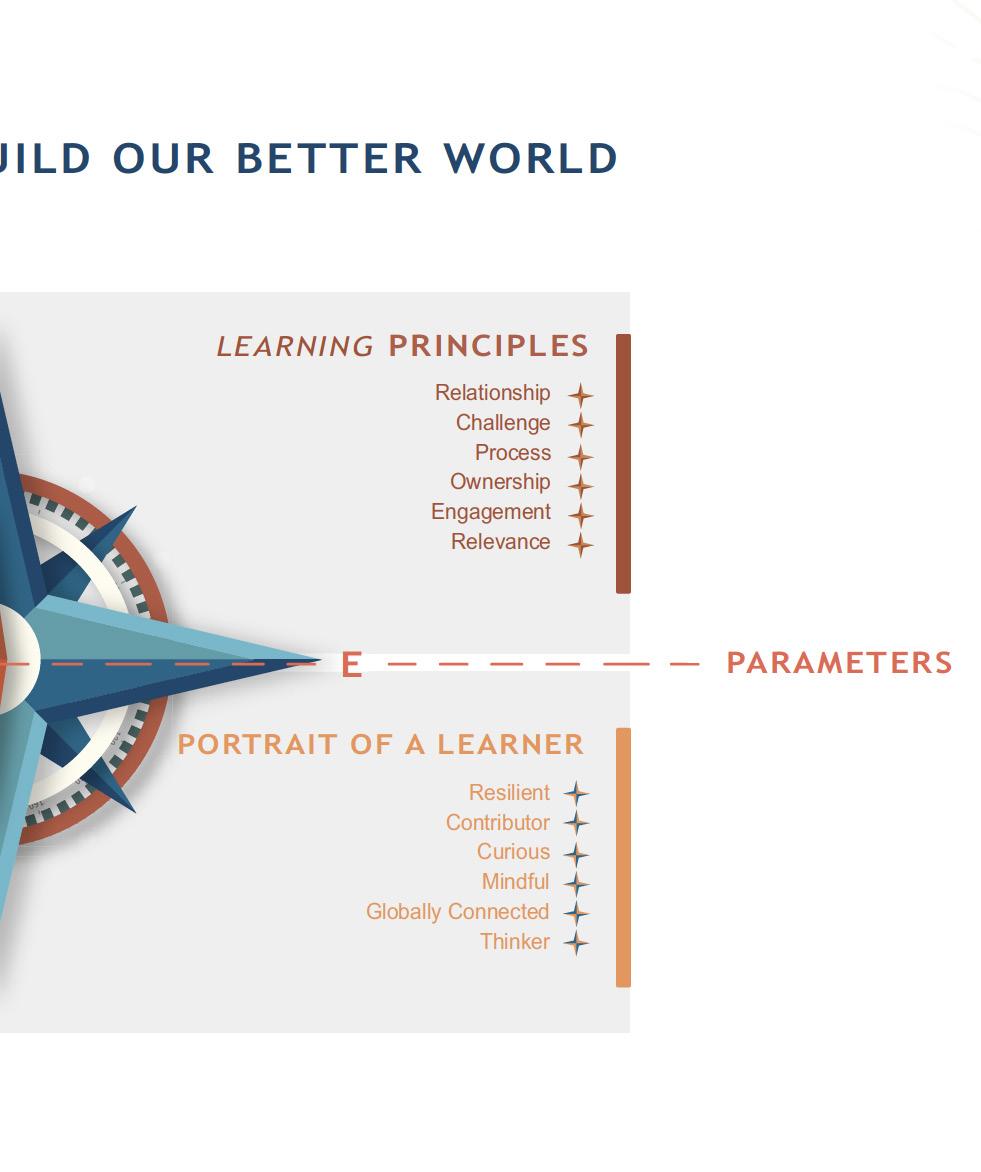


56.
1. Employment Equity
2. Labor, Employment Relations, and Decent Working Conditions
3. Employee Wellness and Support
4. Environment Sustainability
5. Ethics, Integrity and Business Conduct
6. Anti-Discrimination and Commitment to Social Justice: The AISJ Journey to our Common Language
7. Implementation of the Justice, Equity Diversity, and Inclusion (JEDI) Project
8. Compliance and Reporting
9. Responsible and Good Corporate Citizenship Monitoring
10. Stakeholder Engagement
11. Future Areas of Focus
12. Conclusion
56.
SOCIAL & ETHICS REPORT
INTRODUCTION
REPORTING PERIOD: YEAR 2022-2023
The primary purpose of Social and Ethics reporting is to ensure that there is an oversight on the School’s activities regarding social and economic development initiatives, including CSI, consumer relationships, labor and employment, the promotion of equality and ethics management.
Social and Ethics reporting assists the Board of Directors with monitoring the School’s impact of its business on its stakeholders such as employees, government and regulators and the community it operates in. This monitoring ensures that reporting is aligned with relevant legislation, regulations, and codes of best practices relating to labor, ethics, stakeholder engagement, strategic empowerment, and transformation codes.
In the absence of a Social and Ethics Committee the School’s compliance with this requirement is illustrated in the AISJ Board Charter extract:
Social and Ethics Compliance:
9.4.1. The Board recognizes the Companies Act requirements for a Social and Ethics Committee. The overarching role of the Social and Ethics Committee is to act as the social conscience of the School and to ensure that the School behaves as a responsible corporate citizen.
9.4.2. Rather than form a separate Social and Ethics Committee, the Board itself assumes the responsibilities of a Social and Ethics Committee.
9.4.3. The Legal Advisor summarizes matters related to Social and Ethics and reports at least quarterly to the Board on these matters.
9.4.4. The Board is responsible for reporting, at least annually, to the AISJ community on Social and Ethics compliance
COMPLIANCE
In accordance with the Companies Act and King IV, this report spans the reporting period from 1 August 2022 to 31 July 2023. During the past year, the School continued to review its compliance with the Companies Act 71 of South Africa requirements, the King IV Report on Corporate Governance, and UN and OECD recommendations on corruption and labor practices. The quarterly Social and Ethics reports were reviewed by the AISJ Board of Directors.
Employee
Environment
Ethics, Integrity and
Anti-Discrimination and Commitment to Social Justice: The AISJ Journey to our Common Language
Implementation of the Justice, Equity Diversity, and Inclusion (JEDI) Project
Compliance and
Responsible and Good Corporate Citizenship Monitoring
Stakeholder
Future Areas of
1. 2. 3. 4. 5. 6. 7. 8. 9. 10. 11. 12 Employment Equity Labor, Employment Relations, and Decent Working Conditions
KEY SOCIAL AND ETHICS REPORTING PRINCIPLES
Wellness and Support
Sustainability
Business Conduct
Reporting
Engagement
Focus
Conclusion
EMPLOYMENT EQUITY
The School continues to promote the objectives of the Employment Equity Act in order to achieve equity in the workplace by promoting equal opportunity and fair treatment, elimination of unfair discrimination, and implementing affirmative action measures to redress the past as and when identified.
• During this past year the School continued to monitor the workplace and completed its workforce analysis as required by section 19 of the Employment Equity Act.
• The one-year Employment Equity plan was submitted to the Department of Labour within the scheduled date of 15 January 2023.
• The newly elected Employment Equity Committee attended comprehensive training on Employment Equity in March 2023, and held quarterly meetings as required by the Act.
• The School continued to promote the objectives of the Employment Equity Act in order to achieve equity in the workplace by promoting equal opportunity and fair treatment, elimination of unfair discrimination, and implementing affirmative action measures to redress the past as and when identified.
• The gender, race, and the disability employment statistics and trends were continuously monitored with the view to improve on the disability category.
• Fair and equitable remuneration practices were continuously reviewed during the year.
LABOR, EMPLOYMENT RELATIONS, AND DECENT WORKING CONDITIONS
• Compliance with labor and employment laws, regulations, and practices was monitored throughout this year. No incidents of infringements were reported to the School. During this reporting period the Department of Labour conducted an administrative inspection with no adverse findings against the School.
• Within budgetary constraints, the School continues with professional development programs and training of Faculty and Operations staff.
• The monthly bilateral meetings held between Union and the School have continued during this year and augmented the relationship between Management and the Union.
• The wage negotiation process for was concluded during this year in July 2023, resulting in a three (3) year settlement beginning August 2023 and ending in 2026. It is worth noting that due to current global economic and local socio-economic challenges the negotiations were challenging to the union and the School as consensus was not reached on some of the demands.
• A safe and healthy environment and workplace is provided for employees.
• All laws on working hours and employment rights are complied with.
1.
2.
3.
EMPLOYEE WELLNESS AND SUPPORT
• During this reporting period, the Independent Counseling & Advisory Service (ICAS), a leading South African employee health and wellness service provider, continued to assist AISJ employees and their family members.
• Employee Wellness Days were successfully conducted by School’s Medical Aid Service Provider at both campuses during this quarter. All staff were granted an opportunity to consult the service provider on an individual basis.
4.
ENVIRONMENTAL SUSTAINABILITY
• During this reporting period the School’s activities in respect of the environment, health and safety including employees were monitored in the best interests of, the AISJ community, neighbours, contractors, visitors, and other stakeholders in compliance with relevant legislation, by-laws, and other legal requirements or prevailing codes of best practices.
• During this reporting period the School received a newly introduced compliance notice from the Department of Minerals and Energy. This notice requires all schools with a minimum of 2000 sqm of space to have an Energy Performance Certificate. In order to comply with this requirement, schools are required to conduct assessments per guidelines furnished by SANEDI (South African National Energy Development Institute), the regulatory body responsible for monitoring energy innovations and demands. The deadline for compliance has been extended to the year 2025. Because of the magnitude of the project, the School has engaged an expert service provider to assist.
• The Legal Advisor ensured that current Contractors and Service Providers submit the mandatory compliance certificates in order to comply with the relevant legislation.
5.
ETHICS, INTEGRITY, AND BUSINESS CONDUCT
• The School’s ethics and integrity practices are aligned with the 10 principles and guidelines of the United Nations Global Compact (UNCG), the OECD, and Independent Labour Organization (ILO) recommendations.
• The Whistleblowing and Ethics Hotline is independently administered and furnishes reports on a monthly basis. No whistleblowing reports were received during this reporting period.
• Controls and protocols are in place to mitigate the risk of fraud, bribery, and extortion as well as to monitor risks associated with money laundering, corruption, and related misconduct.
• During this reporting period the School embarked on drafting a “Naming Rights Protocol” to assist with the procedure on naming of buildings or spaces.
• Monitored and entrenched community principles, learning principles, through induction programs across the various departments which are intended to educate employees on the principles of the School.
• New and old employees were inducted on the Code of Conduct which employees signed.
6.
ANTI-DISCRIMINATION AND
COMMITMENT TO SOCIAL JUSTICE
- The AISJ Journey to our Common Language
• AISJ Strategic Policies emphasize that justice is based on the principles of Equity and Inclusion.
• Equity is fair treatment, opportunity, and access to resources with each person being a successful and contributing member of the School. During this year various workshops were held between faculty and operations leadership in order to promote this principle. There is a significant positive change in integration within the AISJ community.
• Employees are not unfairly discriminated against, and are free to belong to the Union, subject to the requirements of the relevant labor legislation, regulations, and collective agreement.
7.
IMPLEMENTATION OF THE JUSTICE, EQUITY DIVERSITY, AND INCLUSION (JEDI) PROJECT
• Diversity is described as “the range of similarities and differences that shape the School community including race, gender, religion, national origin, color, age, sexual orientation”, and many others.
• In order to promote this journey, the JEDI steering committee engaged an external service provider to assist the High School Student Council with translating JEDI principles into one of the local languages SePedi and other international languages on campus.
8.
COMPLIANCE AND REPORTING
• The School’s Legal Compliance framework is monitored through the various departmental risk registers.
• Reviewing the Schools strategic policies occurred during this reporting.
• Compliance with the South African School Administration and Management System (SA-SAMS) continued in this period. Commonly known as SA-SAMS, it is an integrated application owned by the Department of Basic Education (DBE) and is designed to assist schools with their administration,management and reporting functions.
• The School’s Public Benefit Organization Status was renewed during this reporting period. SARS issued the PBO Certificate which will remain valid until the status of the School is changed or revoked by SARS for non-compliance with the relevant Tax legislation.
9.
RESPONSIBLE AND GOOD CORPORATE CITIZENSHIP MONITORING
• The AISJ Service-Learning Program continued to be a success throughout this reporting period. Through building relationships with external communities, the School continued its partnership with educational institutions, animal welfare, charity organizations and many others.
• This reporting period witnessed numerous service-learning projects. Highlights include celebrating Friendship Day for Middle School with our Diepsloot Youth Program Partners, Grade 4 speaker from Setsong Tea on how producers shape and reflect their communities, the Mercy House Family fun project which focused on fundraising.
• AISJ also participated in the countrywide CHOC event to raise funds and awareness on childhood cancer and other serious blood related illnesses.
• In addition, the 9 th Graders ventured off campus to support Service in Action with the Friends of Free Wildlife partners with their daily chores.
• During this period a Service-Learning Intern was appointed to support the AISJ service-learning program alongside the Service-Learning Coordinator.
10.
STAKEHOLDER ENGAGEMENT
• Communication with suppliers and services providers continues through procurement, service-level agreements, and meetings.
• Internal communication with the AISJ Community continued through weekly publictions such as Eagles’ View, Izindaba, Kaponos, Compass, and many other platforms of engagements.
• Various surveys were conducted between the School’s stakeholders.
11.
FUTURE AREAS OF FOCUS
BBB-EE valuation certificate for AISJ as a Non-Profit Organization. The School recognizes the importance of the development and empowerment of historically disadvantaged communities of its host country South Africa, and that transformation forms part of the economic and social sustainability of the country. The requirement of a BBB-EE grading was monitored during this period, noting the trend in requests for a certificate from corporate fee payers.
CONCLUSION
AISJ has the necessary policies and protocols in place to advance and monitor social and economic development, sound ethical behavior, fair labor practices, responsible environmental practices, and good stakeholder relations.
The AISJ Legal Advisor is satisfied with the level of CIPC compliance, and there were no instances of material non-compliance to report in the past year.
12.
64.
INTERESTING FACTS
INTERESTING FACTS
New Student & Family Population
0 New Student & Family Population
Student Enrollment
0 Student Enrollment
Instructional Staff Population
0 Instructional Staff Population
Operational Staff Population
Student Nationalities
0 Operational Staff Population
0 Student Nationalities
Faculty Nationalities
University & College Acceptances
0 Faculty Nationalities
0 University & College Acceptances
64.
STUDENTS & FAMILIES
STUDENT ENROLLMENT New Student Population 2021-2022 New Family Population 2021-2022 260 154 New Student Population 2022-2023 New Family Population 2022-2023 2019-2020 1076 878 2018-2019 2021-2022 913 2020-2021 1116 240 158 809 2022-2023
NEW
POPULATION
2019-2020
2018-2019 2021-2022
2020-2021 INSTRUCTIONAL STAFF POPULATION
2019-2020
2018-2019 2021-2022
2020-2021 OPERATIONAL STAFF POPULATION
2022-2023
2022-2023
197
196 162
171
181
183 142
163
146
146

BRAZILIAN KOREAN
PAKISTANI FRENCH
ITALIAN KENYAN SWISS
DANISH
FINNISH NORWEGIAN CHINESE CONGOLESE
STUDENT NATIONALITIES STUDENT NATIONALITIES
32 30 19 19 18 18 15 15 13 13 13 12 12 12 11 10 8 8 7 7 7 7 6 6 5 5 5 5 5 4 4 4 4 4 4 AMERICAN SOUTH AFRICAN INDIAN SOUTH KOREAN BRITISH CANADIAN DUTCH GERMAN SWEDISH AUSTRALIAN JAPANESE
IRISH MEXICAN SPANISH AMERICAN/BRITISH AMERICAN/CANADIAN BELGIAN COLOMBIAN EGYPTIAN GREEK NIGERIAN PORTUGUESE 4
TURKISH ZAMBIAN UGANDAN ZIMBABWEAN ARGENTINIAN
NATIONALITIES NATIONALITIES

AMERICAN/BRAZILIAN
AMERICAN/CHINESE
AMERICAN/JAPANESE CROATIAN
total 809
SOUTH AFRICAN/PORTUGUESE GHANAIAN ISRAELI MALAWIAN MOZAMBICAN NEPALESE SOUTH AFRICAN/SPANISH SOUTH AFRICAN/AMERICAN ETHIOPIAN GAMBIAN JORDANIAN LEBONESE LITHUANIAN PERUVIAN
QATARI SERBIAN ALGERIAN
GABONESE HUNGARIAN INDONESIAN MONGOLIAN NEW ZEALANDER PANAMANIAN SOUTH AFRICAN/CHINESE TANZANIAN THAI 4 3 3 3 3 2 2 2 2 2 2 2 1 1 1 1 1 1 1 1 1 1 1 3 3 2 2 1 1 1 1
FILIPINO
FACULTY NATIONALITIES FACULTY NATIONALITIES FACULTY

AMERICAN

BELGIAN BRITISH


CAMEROONIAN CANADIAN COLOMBIAN



SPANISH FILIPINO FRENCH



NATIONALITIES NATIONALITIES

INDIAN KENYAN MEXICAN



NEWZEALANDER PERUVIAN SINGAPORIAN

SOUTH


AFRICAN ZIMBABWEAN



ACCEPTANCES
ACCEPTANCES
ACCEPTANCES (2020-2023)
A USTRALI A
Western Sydney University
The University of Queensland
BELGIU M
Katholieke Universiteit Leuven
Universiteit Ghent
CANADA
Brock University
Dalhousie University
Douglas College
Lakehead University
McMaster University
Memorial University of New Foundland
OCAD University
Ontario Tech University
Simon Fraser University
The University of British Columbia
Trent University
University of Alberta
University of Calgary
University of Guelph
University of Ontario Institute of Technology
University of Ottawa
University of Toronto
University of Victoria
University of Waterloo
Western University
Wilfrid Laurier University
CZECH REPUBLI C
Charles University In Prague
DENMAR K
DANIA University of Applied Sciences
VIA University College
FINLAN D
Häme University of Applied Sciences (HAMK)
FRANCE
College Universitaire de Sciences Po
ESSEC Business School
École Polytechnique
GERMAN Y
University College Twente
GREECE
American College of Greece
IRELAN D
University College Dublin
Trinity College of Dublin
IT ALY
The American University of Rome
JA PA N
Sophia University
KORE A
Yonsei University
MEXIC O
Panamerican University
NETHERLAND S
Amsterdam University College
Amsterdam University of Applied Sciences
Erasmus University Rotterdam



The Hague University of Applied Sciences
Universiteit Utrecht
University College Utrecht
University of Amsterdam
University of Maastricht
University of Twente
Utrecht University
Wageningen Universiteit
Webster University Leiden
PORTUGAL
Catholic University of Portugal
SOUTH AFRICA
Tshwane University of Technology
University of Cape Town
University of South Africa
University of Stellenbosch
University of the Witwatersrand
SP AI N
IE University
Inholland University of Applied Sciences
ESADE Business School
European Business School Barcelona
SWITZERLAND
Les Roches International School of Hotel Management
European Business School Montreux
University of Zurich













Hanze University of Applied Sciences, Groningen
University of Groningen
Leiden University
Maastricht University
Webster University Geneva
UNITED KINGDOM
Bournemouth University
Brunel University London
Buckinghamshire New University
Cardiff University
City, University of London
Coventry University
Durham University
Edinburgh Napier University
Heriot-Watt University
Hult International Business School
King's College London, University of London
Leeds Beckett University
London School of Economics and Political Science,(University of London)
Loughborough University
MetFilm School
Middlesex University
Newcastle University
Northumbria University, Newcastle
Nottingham
Trent University
Oxford Brookes University
Queen Mary University of London
Queen's University (Faculty of Applied Science)
Queen's University Belfast
Royal Holloway, University of London
Staffordshire University
Swansea University
The University of Edinburgh
University College London (UCL)
University of Bath
University of Birmingham
University of Bristol
University of Brighton
University of Cumbria
University of Dundee
University of East London
University of Essex
University of Exeter
University of Glasgow
University of Hull
University of Kent
University of Leeds
University of Leicester
University of Lincoln
University of Liverpool
University of Manchester
University of Nottingham
University of Plymouth
University of Reading
University of Salford
University of Sheffield
University of Surrey



University of University of University of University of
Queen Mary
University of University of UNITED S
AMDA College
Los Angeles
Appalachian
Arizona State
Auburn University
Barnard College
Bethany Lutheran
Boston University
Bowling Green
Brigham Young
Brigham Young
Brigham Young
Brigham Young
Bryn Mawr College
California State
Calvin College
Carleton University

Carnegie Mellon
Carroll Community
Case Western
Central Michigan
Chapman University
Clark University
Colorado School

Columbia College
Concordia University
Connecticut
DePaul University
DigiPen Institute
Drew University
Drexel University
East Carolina
Emerson College
Emory & Henry
Emory University
Fairleigh Dickinson
Fairleigh Dickinson
Florida Institute
Florida State
Fordham University
Frostburg State
Georgia Institute
George Mason
George Washington
Georgetown
Grinnell College
Hamline University
Hofstra University
Howard University
Hult International
Indiana University
Iowa State University
iSan Diego State
James Madison
Johns Hopkins
Johnson & W
Lehigh University
Lewis & Clark
Louisiana State
Loyola Marymount
Lynn Universit
Macalester College
Mills College
Minnesota State
Montana State
Morehouse College
New York University
Northeastern
Ohio State University
Old Dominion
Otis College
Pace University
Pennsylvania
Pepperdine University
Pratt Institute-Main
Purdue University
Purdue University
Purdue University-Main
Queens College
Quinnipiac University
U NIVERSITY & COLLEGE
U NIVERSITY & COLLEGE
U
(2020-2023)
Warwick Westminster York of the Arts London
University of London
Southampton of Stirling
TA TES OF A MERICA
College and Conservatory of the Performing Arts, Campus Appalachian State University State University-Tempe University College Lutheran College University Green State University oung University oung University-Hawaii oung University - Provo oung University - Idaho College State University-Sacramento College University Mellon University Community College estern Reserve University Michigan University University University School of Mines College University College University Institute of Technology University University Carolina University College Henry College University Dickinson University - Florham Campus Dickinson University - Metropolitan Campus
Institute of Technology University (College of Arts & Sciences)

University at Rose Hill State University Institute of Technology Mason University ashington University University College University University University International Business School University at Bloomington University State University Madison University Hopkins University Wales University-Providence University Clark College State University and Agricultural & Mechanical College Marymount University University College College State University-Mankato State University, Bozeman College University Northeastern University University Dominion University of Art and Design University, New York City Pennsylvania State University University Institute-Main University (College of Engineering) University Fort Wayne University-Main Campus College of the CUNY University
Radford University
Randolph-Macon College
Ringling College of Art and Design
Rowan University
Rutgers University-New Brunswick
Saint Edward's University
Santa Monica College
Savannah College of Art and Design
School of the Art Institute of Chicago
School of Visual Arts
Seton Hall University
Snow College
St Olaf College
St. John's University
St. Thomas
Stevenson University
Suffolk University
SUNY at Albany
SUNY at Purchase College
Syracuse University (College of Engineering & Comp. Science)
Temple University
Texas State University
The New School
The University of Iowa
The University of North Carolina at Chapel Hill
The University of Tampa
The University of Texas at Austin
The University of Texas at San Antonio
Troy University
Tulane University (Tulane College of Liberal Arts & Sciences)
University of Arizona
University of California-Berkeley
University of California-Irvine
University of California-Los Angeles
University of California-Merced
University of California-Riverside
University of California-San Diego
University of California-Santa Barbara
University of California-Santa Cruz
University of California, Davis
University of Chicago
University of Colorado at Boulder (College of Engineering & Applied Science)
University of Denver
University of Florida
University of Illinois At Urbana-Champaign
University of Kentucky
University of Lynchburg
University of Maine
University of Maryland-Baltimore County
University of Maryland-College Park
University of Massachusetts-Boston
University of Massachusetts, Amherst (Isenberg School of Management)
University of Miami
University of Michigan-Ann Arbor
University of Minnesota, Twin Cities (CSE College of Science and Engineering)
University of New England
University of New Hampshire-Main Campus
University of North Carolina at Asheville
University of North Carolina At Chapel Hill
University of Notre Dame
University of Oregon
University of Pennsylvania
University of Pittsburgh-Pittsburgh Campus
University of San Diego
University of Sioux Falls
University of South Alabama
University of South Dakota
University of South Florida, Tampa
University of Vermont (College of Engineering & Mathematics)
University of Victoria
University of Virginia-Main Campus
University of Washington
University of Wisconsin-Madison
University of Wyoming
Utah State University
Utah Valley University
Virginia Polytechnic Institute and State University
Warren Wilson College
Washington College
QA TA R
Northwestern Qatar
University of Qatar

USA Continued....











































































































